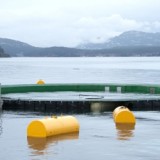From the Times-Colonist – Jan 20, 2011
by D.C. Reid
Two weeks ago I summarized what scientists think are the main
questions to investigate in the 2009 Fraser River sockeye collapse.
Sixty-eight experts and observers did a heavy dose of considering and
submitted their report to the Cohen Commission. They have contributed
testimony to the evidentiary hearings, too, and this column tells you
what they said, and other factors.
Among nine hypotheses, they
crunched the available science from the early 1980s up to 2010 and each
participant opined which he/she thought were likely causes. They found
that where the fry were hatched and resided for two years and then
swam all the way down the Fraser River were unlikely to have produced
the massive kill. In 2007, for instance, the Georgia Strait sockeye
seine found only 157 fry from the huge Chilko River area cohort of 139
million fry that started out. And, surprisingly, millions of fry,
particularly the Harrison, take up residence in the Fraser plume, and
so its entire Lower Mainland contaminants don’t kill sockeye.
In
the ocean, it turns out that it is unlikely that marine mammals ate
them all, even though they snack on chum at the Puntledge River
estuary. Nor did unauthorized fishing outside our 320-kilometre
territorial waters account for losses. Later, up-river migration of
adults — as much as 600 kilometres — seems not to have killed many
returning adults either, nor affected the health of the next year’s fry
they spawned.
So what did they find? The most likely causes are:
marine and freshwater pathogens like viruses, bacteria and sea lice;
ocean conditions and a huge negative algal bloom inside Georgia Strait;
outside waters were ruled out for 2007-2009. Georgia Strait
conditions of algae, oxygen, salinity, acidity or other physical and
biological conditions are seen to have long-term negative effects on
survivability, though these conditions are not prevalent every year.
And this may help explain the 2010 bumper crop that no one expected;
and why Harrison River sockeye that transit Juan de Fuca have been
growing in numbers steadily for the past 20 years, contrary to the
trend.
Though the scientists thought pathogens were a big
negative factor, more science is needed to absolutely nail these down.
But it seems to be — wait for it — fish farm issues, say, sea lice,
and viruses. Environmentalist Alexandra Morton has asked the commission
to compel the farms to release data that they have been withholding.
It is the virus situation that is the nightmare scenario: farmed
Chinook salmon likely passed a salmon leukemia retrovirus to the farmed
Atlantics and they infected the returning sockeye adults. This is DFO
research from Dr. Kristina Miller. The sockeye managed the long swim
upstream only to die prior to spawning.
Another scientist,
Michael Kent, studying viral transmission, reviewed work that has shown
this fast mutating bug can infect dogs, sheep and humans. This is the
nightmare. Make sure you cook your Fraser sockeye well, and send a
letter to Gail Shea saying: fund more of Miller’s research, toute de
suite
This is a fascinating, heavy crunching science report. If
you read only one table in your investigation of this issue, let it be
E-2. This table summarizes all the research for or against a possible
explanation and will inform your understanding of salmon science for
the rest of your fishing days:
www.psc.org/pubs/FraserSockeyeDeclineWorkshopReport.pdf.
Read article at TimesColonist.com

